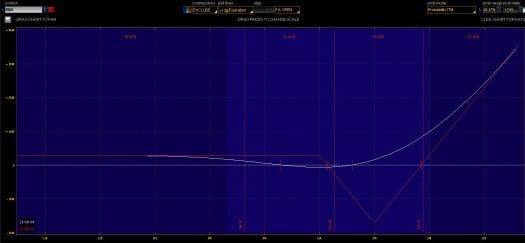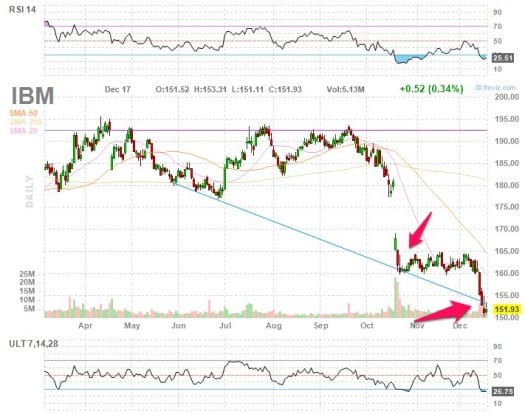During October, I published a trade idea on IBM. The idea was bullish and contrarian and, in short, was: Even though IBM has deviated from its roadmap – The buyback and the long-term pricing power will be enough to push the company higher. This is how IBM looked at the time I entered the trade:

- Find trades more like this in our Options Screener
The trade I took – Ratio spread – Allowed me to profit if the stock will rise or fall. I assumed the volatility would continue. Here is the profit chart:

You can see that the profit was unlimited, but I could also profit with a sharp decline. The downside of the trade was that if the stock will consolidate, I’d start to lose money as this is a theta negative trade.
This is what happened next:

As you can see, We did have consolidation for about a month and a half. This was problematic, and I started to look for an exit. Luckily, As the stock went to a free-fall 2 days ago, I was profitable again and sold my position. I would have exited anyway during December, But the fact the position turned profitable made the decision easier.
Though the trade did not go my way, I did show a small profit at the end. This was because I built a “plan B” into the position. This is an example of the power of options, and you should always think about plan B when trading them.
Read more in our guide about how to be more successful when buying options.

